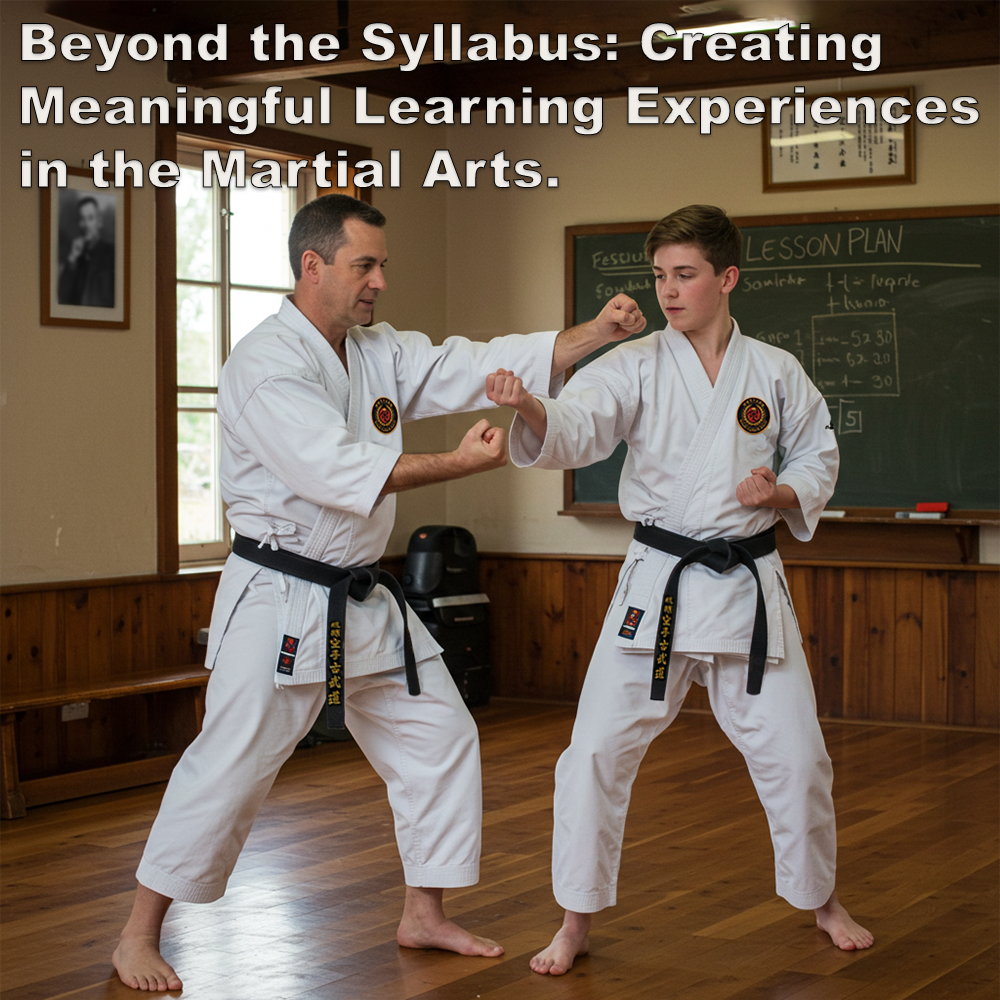
(Approx 3 minute read)
Someone recently commented on one of my articles, saying they don’t bother planning lessons – they just go with the flow. That got me thinking.
.
I’m all for being adaptable in the moment. But it made me reflect on how we, as instructors, prepare – or don’t – for the learning that happens in front of us.
.
Are you giving students the chance to truly grasp what you’re teaching – or just delivering information and hoping it sticks?
.
I see a lot of teaching, that jumps straight from the “telling” part to expecting students to “just do it” (as Nike said) on their own. And that’s where the learning often falls flat.
.
I’m not saying every minute needs to be scripted. But having some kind of roadmap for your lesson? It makes a difference. Think of it like this: you wouldn’t set off on a road trip to a place you’ve never been without some idea of how to get there, right? A lesson plan is kind of like that map for your teaching.
.
Most instruction is given in the way it’s always been done, by your instructor, and his instructor, and so on. That model can still result in solid learning – if it’s implemented correctly. But that’s where I’m seeing a problem. Too often, students don’t learn in any real depth. Sometimes, the focus becomes solely on ticking boxes in a syllabus, rushing through techniques just to get to the next belt without ensuring true comprehension or application.
.
Just because you covered it, doesn’t mean they’ve learned it.
.
When you have a plan – even a loose one – a few things happen. You’re more likely to cover what you actually need to cover. You’re better at managing your time – no more realizing you’ve spent way too long on one thing and didn’t cover something you should have. And, crucially, it forces you to think about what your students will be doing, not just what you’ll be saying.
.
It’s true that students learn at different speeds. So, a lesson plan shouldn’t be too strict. Think of it as a general guide. Focus on one main idea, but have easier and harder ways for students to practice it.
.
Knowing roughly where each student is helps you give them the right kind of help. You can teach everyone the same basic thing, then give different challenges based on their level. A lesson plan gives you a direction – but you need to be ready to adjust for each student.
.
That’s a key point for me – that missing step. We often go from explaining something (direct instruction) straight to expecting students to do it perfectly on their own (independent practice). But what about that bit in between? The guided practice – the chance to actually wrestle with the ideas with your support? That’s where the real learning often happens.
.
Students can’t just be passive sponges. That’s why I think about things like role-play, simulations, asking “what if” questions. It’s about getting them to do something with the information – to process it, apply it, connect it to what they already know. You can’t just tell someone how to escape; they need to feel it, practice it, and try it in a controlled scenario.
.
Having a plan doesn’t mean you can’t be flexible. If a student asks a brilliant question that takes you down a slightly different path? Go for it! A teachable moment pops up out of nowhere? Seize it! Your plan is a guide, not a set of unbreakable rules. It’s about having a solid foundation so you can be flexible and responsive when those moments arise.
.
So, if you’re someone who tends to fly by the seat of your pants in your teaching, maybe consider adding a few more tools to your toolbox. Even a simple outline can make a big difference in how well your students learn – and how much more engaging your lessons can become.
.
Just to be clear – I’m not here to tell you how to teach. If your approach works and your students are truly learning, then that’s what matters.
.
It’s not about controlling every moment – it’s about being deliberate. About creating opportunities for real learning to happen.
.
The plan isn’t the point. The learning is.
.
.
Written by Adam Carter
